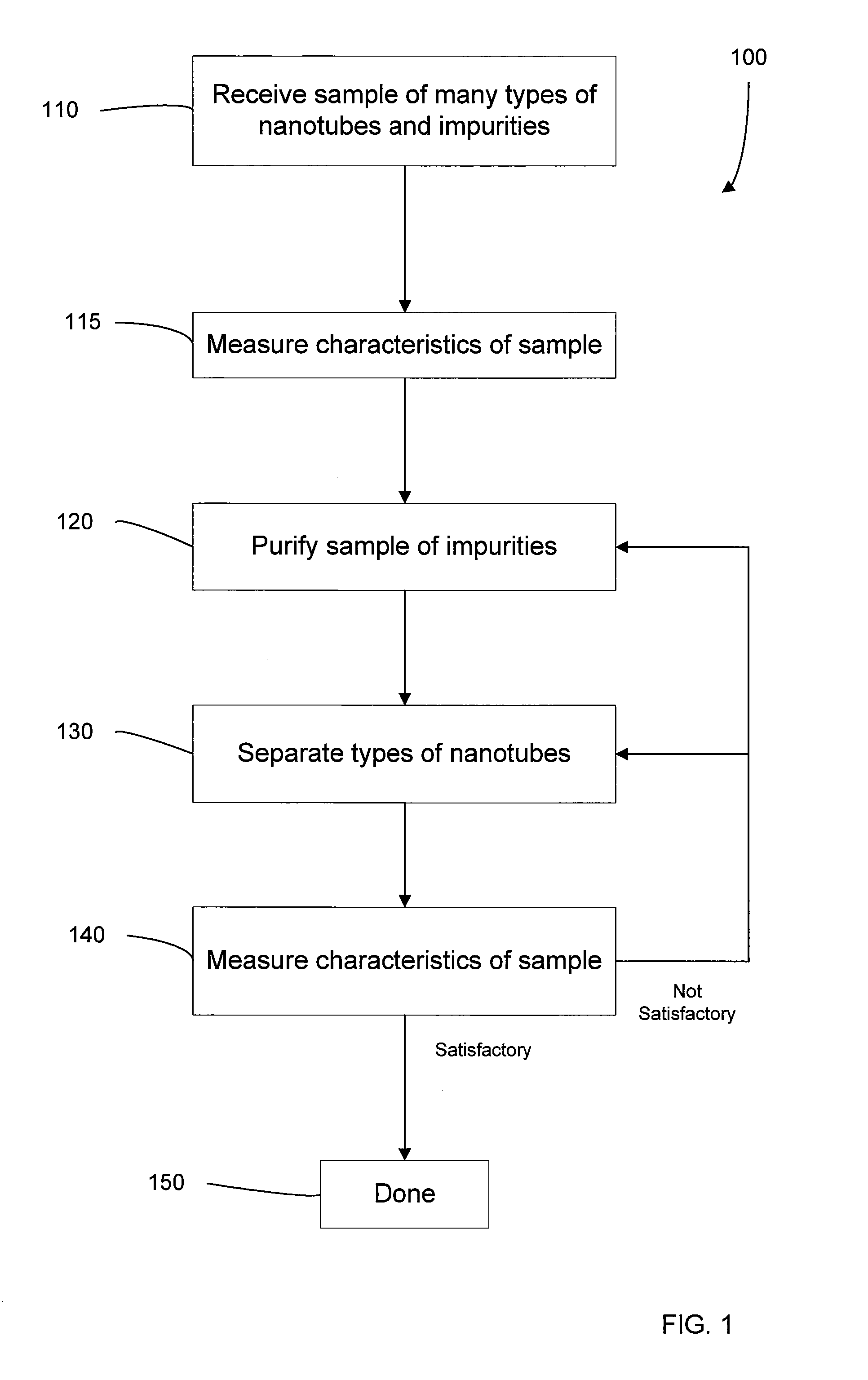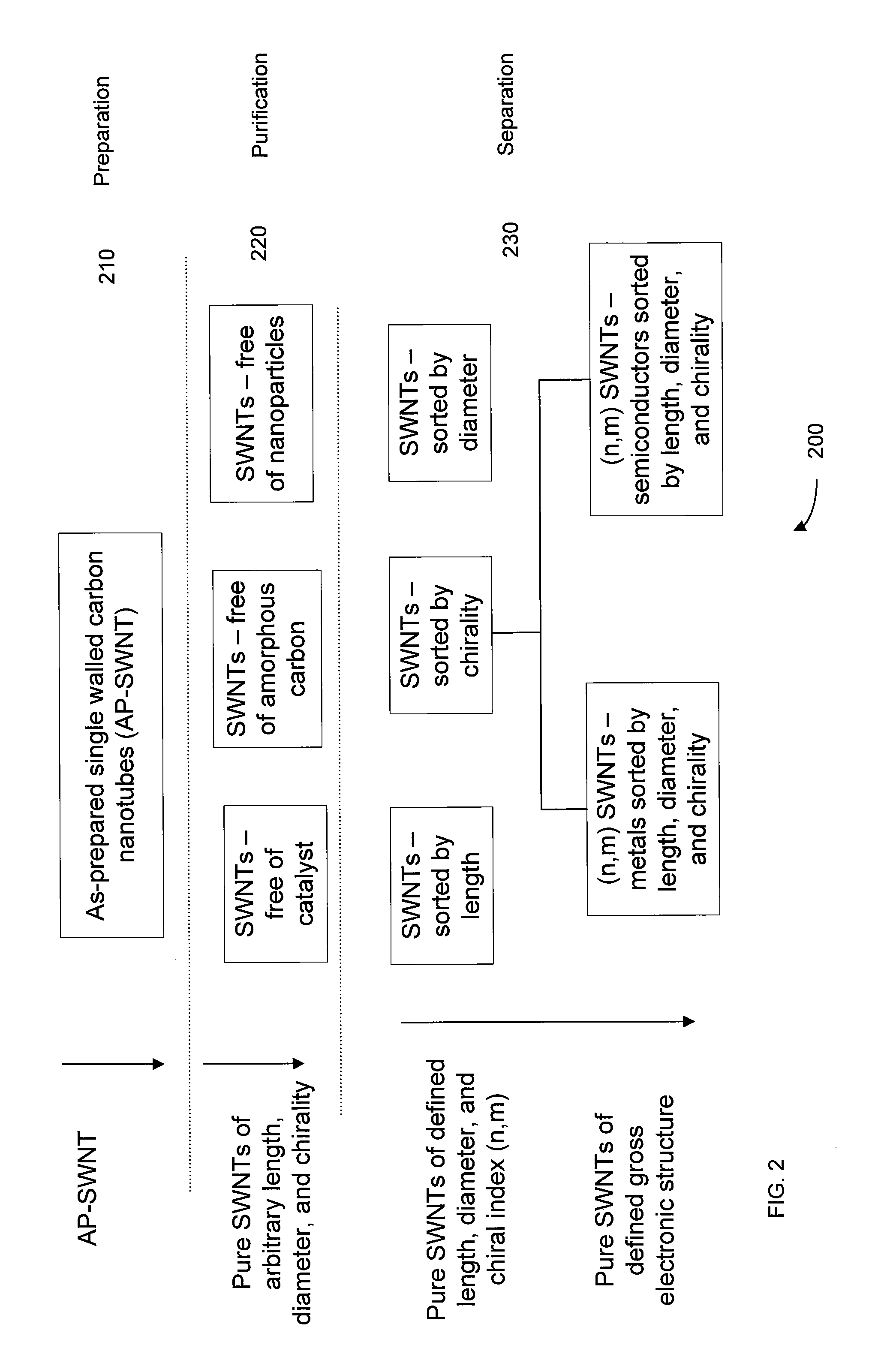Carbon Nanotube Purification and Separation System
a carbon nanotube and separation system technology, applied in the field of carbon nanotube purification and separation system, can solve the problems of unlabeled vials, uncharacterized materials, inability to meet the requirements of the application of off-the-shelf instruments,
- Summary
- Abstract
- Description
- Claims
- Application Information
AI Technical Summary
Benefits of technology
Problems solved by technology
Method used
Image
Examples
Embodiment Construction
[0035] Embodiments of the present invention provide systems and methods for quantifying, purifying and separating fullerenes, such as carbon nanotubes (CNTs). The purification methods offer the ability to obtain nearly 100% impurity-free single walled nanotubes (SWNT) content from a given impure, as-produced SWNT bundle without any destruction, defect creation or functionalization of the SWNTs. The separation methods offer the ability to obtain the desired range of chirality and diameter from a given non-separated, as-produced SWNT bundle. Nanometrological validation of the success of purification and separation uses a pyroelectric detector and Raman spectroscopy in a single system, thus providing a critical aspect for the nanomanufacturing environment. Additionally, the present invention offers the ability to avoid ‘wet’ chemistry, as some embodiments process dry SWNTs (i.e. the SWNTs are not in solution). The SWNTs will thus be available as-is for a variety of applications without...
PUM
 Login to View More
Login to View More Abstract
Description
Claims
Application Information
 Login to View More
Login to View More - R&D
- Intellectual Property
- Life Sciences
- Materials
- Tech Scout
- Unparalleled Data Quality
- Higher Quality Content
- 60% Fewer Hallucinations
Browse by: Latest US Patents, China's latest patents, Technical Efficacy Thesaurus, Application Domain, Technology Topic, Popular Technical Reports.
© 2025 PatSnap. All rights reserved.Legal|Privacy policy|Modern Slavery Act Transparency Statement|Sitemap|About US| Contact US: help@patsnap.com



